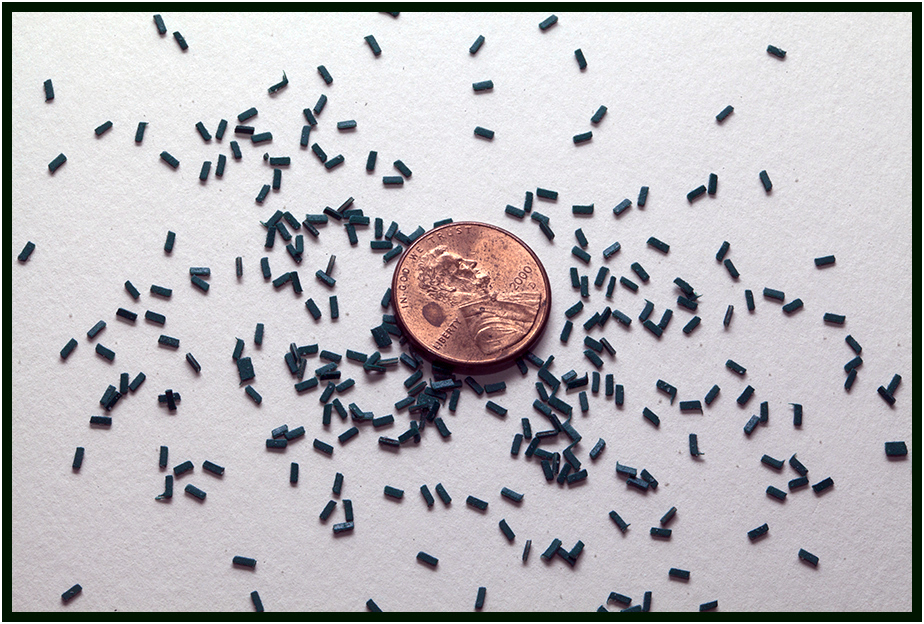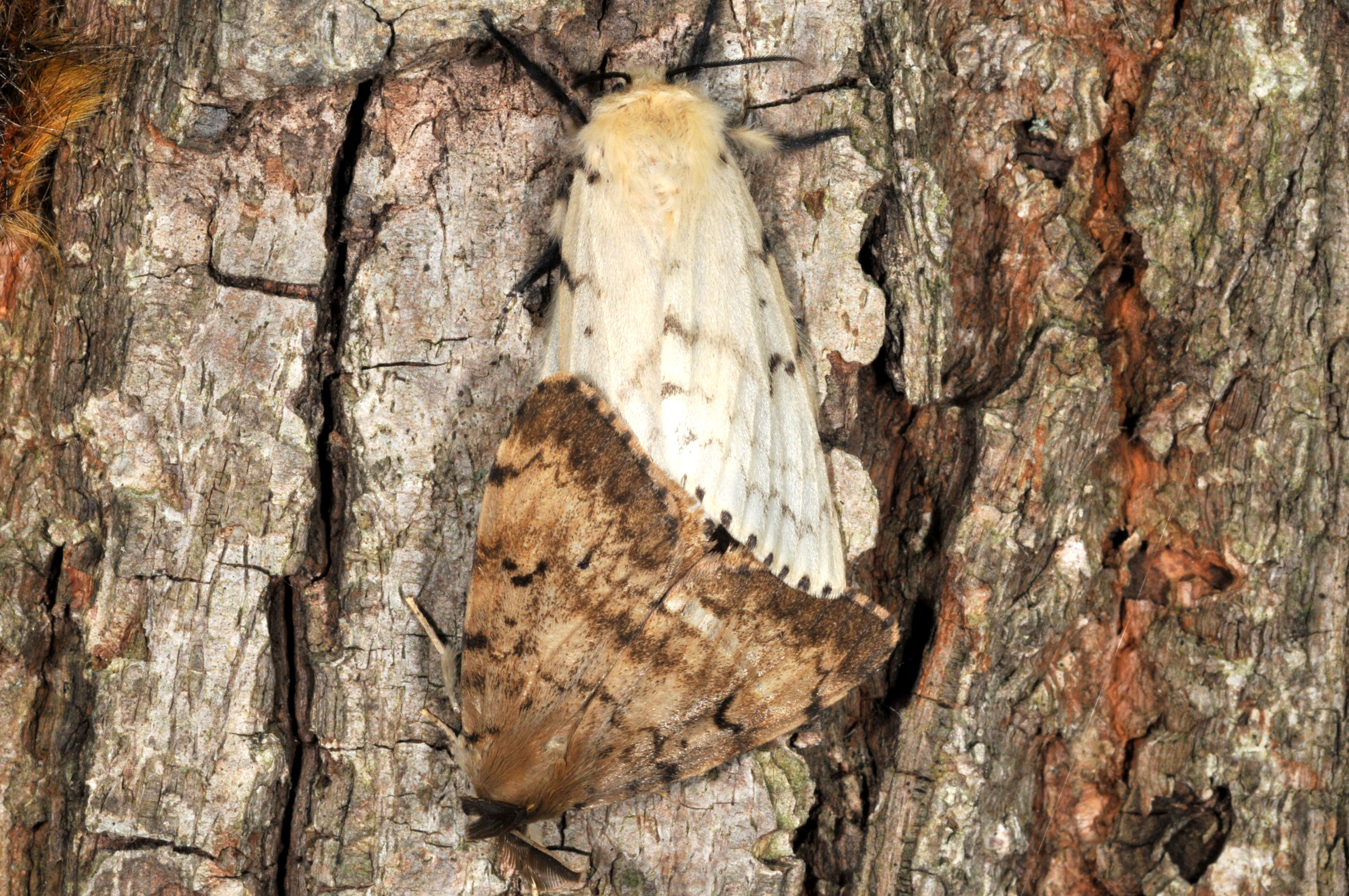SPONGY MOTH
Q & A's ABOUT Pheromones & CONTROLLING SPONGY MOTH
Cliff Sadof, Department of Entomology, Purdue University; Joe Caudell, IDNR Deer Biologist; Phil Marshall, State Forest Health Specialist and Megan Abraham, State Entomologist, Indiana Department of Natural Resources
If you want to view as pdf, click here
Q: What is a pheromone?
A: Pheromone (pronounced fair-o-moan) is a powerful scent produced by the female insects to attract males. Because the adult female spongy moth (formerly known as gypsy moth) is unable to fly, they rely on these pheromones to attract males. In the forest, males find females by flying upwind to locate the female that is producing the scent. The spongy moth pheromone used in monitoring and control operations is produced commercially.
Q: What is the spongy moth, and why is it a problem??
A: The spongy moth (formerly called the gypsy moth) is an insect with a big appetite for oaks. In 2022 it defoliated over 9 million acres of forest in the United States and nearly 1 million acres in Michigan alone. Each caterpillar can grow up to 2 inches long and can consume up to 11 square feet of foliage from early May until June. When abundant, caterpillars can completely defoliate trees. Although healthy trees can survive defoliation, repeated removal of leaves can kill a tree. Older, less vigorous trees suffering from drought can be killed by a single defoliation. Capable of feeding on 500 types of plants, this pest threatens Indiana forests and suburban landscapes.
Spongy moth caterpillars are also a public nuisance in recreational and residential areas that are known for their oaks. The rain of caterpillars and their excrement from treetops can discourage even the heartiest Hoosiers from taking a walk in the park. Some people develop rashes or allergies to caterpillar hairs that float through the air.
Q: Where did the spongy moth come from?
A: The spongy moth was introduced from Europe to Massachusetts in 1869. Since that time, spongy moth has been spreading slowly to the west and south. Because adult females cannot fly, most of the spongy moth spread occurs when young caterpillars crawl to treetops and are blown by the wind. Spongy moths can be moved long distances when people unknowingly carry them from infested areas as egg masses or cocoons attached to firewood, campers, nursery stock, or other outdoor items. Most of the isolated pockets of infestation that have been located in Indiana are a result of this kind of long-distance movement.
Spongy moth caterpillars can completely defoliate oaks and other deciduous trees in early summer. (Photo Credit: Elizabeth Barnes)
Q: How is the pheromone used to slow the progress of the spongy moth?
A: Traps, baited with pheromone, have been used in Indiana to detect and eliminate pockets of these hitchhiking spongy moths since 1973. They are also used to monitor the natural spread of this insect as it moves through Indiana. Currently, only counties in the northern part of the state are considered infested.
When males are found in the traps outside of the infested area, DNR personnel increase trapping intensity to locate the source of the moths and inspect the area for egg masses. Once the moths are detected, decisions are made about how to eliminate the spongy moths from these isolated areas. Since the beginning of the trapping program, many pockets of spongy moth have been detected, treated, and eliminated in Indiana.
Q: How is the pheromone used to control spongy moth?
A: Spongy moth populations can be suppressed or eliminated when an infested area is laced with enough pheromone to make it impossible for males to find females. Unable to mate, the spongy moths simply die of old age without producing any offspring.
Q: How are pheromones applied?
A: There are currently 3 materials available for mating disruption treatments: Disrupt II, SPLAT-GM, and SPLAT-GMO, all of which are from an airplane:
Disrupt® II (Hercon Environmental, Emigsville, PA) is delivered as plastic flakes. These are applied with a sticking agent (MicroTac, Hercon Environmental, Emigsville, PA), and the pheromone is slowly released through the edges of the small flakes over a period of several weeks.
SPLAT-GM® (ISCA Technologies, Riverside California) is a biodegradable gel that releases the pheromone over a period of 11 weeks. It is 13% active ingredient by weight; the remaining ingredients consist of waxes, water, emulsifiers, oils, and preservatives.
SPLAT-GMO® is an organic-approved version of SPLAT-GM®.
Q: Will the pheromone be noticeable in the treatment area?
A: No. Less than one cup of any of the pheromone formulations are applied per acre. As such it will be difficult to find any residue on trees, houses, or cars. Applications of these products have not harmed the paint finish or cars or homes.
Q: Are spongy moth pheromones dangerous to people or wildlife?
A: No. They are non-toxic to humans and other animals. The pheromone application will only affect spongy moths. Caterpillars of other moths and butterflies will not be harmed.
Q: If pheromones are so safe, why aren’t they always used to control spongy moth?
A: Pheromones cannot reduce spongy moth populations in areas that are heavily infested with moths. In these areas there are enough males and females wandering about for them to find each other without the help of pheromones. In contrast, when populations of moths are very low, mating disruption works well and is cost competitive with other treatment methods such as BtK.
TO REPORT SPONGY MOTH
- Download and use the Great Lakes Early Detection Network App for Android or iPhone.
- Contact the Indiana DNR at 866-NO-EXOTIC.
FOR MORE SPONGY MOTH INFORMATION
- Visit Purdue Extension Entomology's Spongy Moth Information Web Site to download free GM series bulletins and get the latest information.
- Order the GM series bulletins at your Purdue County Extension office.
- Contact the Department of Entomology, Purdue University, W. Lafayette, IN, 47907-1158, 765-494-4554, or Indiana Department of Natural Resources at 317-232-4120.
Pheromone flakes (in relation to size of a penny). (Photo Credit: John Obermeyer)
Spongy moths mating. (Photo Credit: John Obermeyer)
READ AND FOLLOW ALL LABEL INSTRUCTIONS. THIS INCLUDES DIRECTIONS FOR USE, PRECAUTIONARY STATEMENTS (HAZARDS TO HUMANS, DOMESTIC ANIMALS, AND ENDANGERED SPECIES), ENVIRONMENTAL HAZARDS, RATES OF APPLICATION, NUMBER OF APPLICATIONS, REENTRY INTERVALS, HARVEST RESTRICTIONS, STORAGE AND DISPOSAL, AND ANY SPECIFIC WARNINGS AND/OR PRECAUTIONS FOR SAFE HANDLING OF THE PESTICIDE.
April 2022

It is the policy of the Purdue University Cooperative Extension Service that all persons have equal opportunity and access to its educational programs, services, activities, and facilities without regard to race, religion, color, sex, age, national origin or ancestry, marital status, parental status, sexual orientation, disability or status as a veteran. Purdue University is an Affirmative Action institution. This material may be available in alternative formats.
This work is supported in part by Extension Implementation Grant 2021-70006-35390/ IND90001518G-1027053 from the USDA National Institute of Food and Agriculture.
765-494-8491
www.extension.purdue.edu
Order or download materials from https://edustore.purdue.edu/




